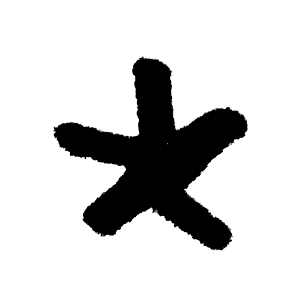It’s a running joke between the two of us that Asterisk is — among other things — a journal of 5,000 word pieces on social science methodology. We still are (seriously, pitch us), but when it came time to decide on a theme for this issue, we wanted to zoom out. The most rigorous dissection of any given topic can only go so far if it stops short of taking into account the field — and the culture — in which it’s produced. Knowledge gets made by people, and people, of course, are part of communities.
Take the first place many of us go to learn. The best Wikipedia articles are collaboratively written by hundreds of volunteers, edited thousands of times. Who works so hard for free? As Annie Rauwerda of Depths of Wikipedia tells us, the same people who are willing to spend seven years arguing over the best spelling of yogurt. Bullshit on Wikipedia still makes it past the dedicated anti-vandalism volunteers, but — we’re just being honest here — it’s nothing compared to what we read every day on X. The introduction of Community Notes has been a much welcome corrective to that. We got the chance to speak with the team who developed the platform to find out how they went about designing the best update to the former bird platform since it allowed line breaks.
Social media has been implicated in America’s “friendship recession.” How bad is it? According to sociologist Claude Fischer, it’s…not? What we’re actually seeing, he argues, are regular scares about friendlessness, artifacts of the inconsistent and sometimes sloppy ways we measure connection. (Okay, yes, but please note this is only a 4,000 word essay on social science methodology.) Claude leaves open the possibility that something has changed in our sense of connection over the past decade, but (we won’t spoil it) — it’s not social media or cell phones. Still, spend any time doomscrolling and it’s easy to see why it feels like an infectious malaise is spreading through our devices. With Molly Huang as our guide to the ever-evolving vernacular of the Chinese internet, it’s clear that even the Great Firewall isn’t strong enough to keep ennui — and anti-CCP sentiment — off the group chat.
Language is a guide to a shared social reality. But what does it say about a community when its language has started to feel stale? Sheon Han argues that in the case of the rationalist blogosphere, what once began as a stylistic counter to the media hive-mind has grown into just another way to claim allegiance. Your favorite little magazine has some close connections to said community, so we know they can take the critique. In fact, Asterisk is part of a number of communities. We’re lucky to be connected to writers with an inside view on some of the most forward thinking (in more ways than one) developments in tech and academia. Dan Schwarz tells the story of the rise and fall and rise again of internal prediction markets at Google (it helps that he built one of them). Alec Nevala-Lee traces how the Clock of the Long Now began as a technofuturist’s dream to build a clock that will run for ten millennia, then ended up on Jeff Bezos’s Texas ranch. Tom Ough answers the question that many of us had after Oxford’s far-sighted Future of Humanity Institute abruptly shuttered earlier this year: did anyone see this coming?
Community-led development has for decades been a goal of international aid projects. Does it work? Clara Collier digs into the archives of the Indian Community Development Program, instituted country-wide in the 1950s and early 1960ss, to show that it takes more than a village — specifically, it requires individual dedication and perseverance, which may be the hardest thing of all to scale. It’s hard to predict, in other words, how communities might develop. David Skarbek, after years studying prison gangs in the American penal system, shows why they form, and explains some of the most interesting ways they operate. And Jeremiah Johnson provides a user’s guide on how to build a subculture from scratch. Step one: you’re gonna need a flag you can rally ‘round.
We’d be remiss not to mention that with this issue, we officially turn two. Back when we began in 2022, we’d usually revert to an elevator pitch to explain what, exactly, Asterisk is. Today, if inch by inch, our reputation has begun to precede us. At conferences, at the dog park, on the train, we’ve run into folks who know — and love — what we’re trying to do. Which is to say: the Asterisk community is growing too. We’re deeply grateful that includes you.
What do we want for our birthday, you ask? Now that we’ve grown up a bit, we think we’re ready for some Asterisk swag. After all, every niche magazine community needs a tote bag it can rally ‘round.



